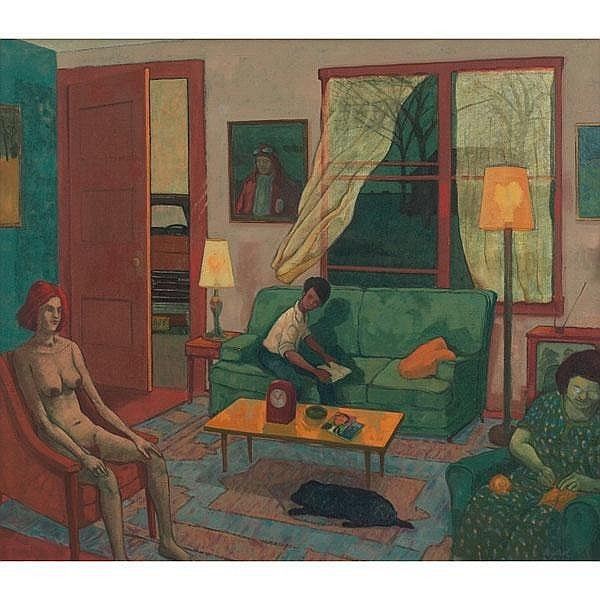Nationality American | Name Gibson Byrd | |
 | ||
Full Name Decatur Gibson Byrd Known for Figure and Landscape painter Died April 16, 2002, Del Mar, California, United States | ||
Gibson Custom Gibson Byrdland Guitar
Decatur Gibson Byrd (February 1, 1923 – April 14, 2002), was an American painter as well as professor. His early works focused mostly on figurative paintings while his later work turned more towards landscape paintings.
Contents
- Gibson Custom Gibson Byrdland Guitar
- Normans Rare Guitars Guitar of the Day 1964 Gibson Byrdland
- Life and career
- Collections
- Gibson Byrd Publications
- References
Norman's Rare Guitars - Guitar of the Day: 1964 Gibson Byrdland
Life and career
Byrd was born in Tulsa, Oklahoma to a Caucasian mother and a half Shawnee father. He attended Central High School and was a member of the first graduating class of Will Rogers High. During World War II, he served as a B-17 engineer and top turret gunner. After the war, Byrd received his B.A in Art from the University of Tulsa in 1949 and obtained an M.A. of Fine Arts from the University of Iowa in 1950. After graduation, he taught art at Central High School in Tulsa from 1950 to 1952. From 1952 to 1955, he was the Director of the Kalamazoo Art Center, and lectured at the University of Michigan Extension Division. He was married to Benita Springer and had two children. From 1955 until his retirement in 1985, he was a faculty member of the University of Wisconsin-Madison Art Department. At the UW Madison, Byrd was a contemporary of other prominent artists including Aaron Bohrod, Warrington Colescott, Raymond Gloeckler, Walter Hamady Harvey Littleton, Alfred Sessler and John Wilde. A painter and an educator, he served at various times as Department Chairman, Graduate Chairman, and Undergraduate Chairman. During 1965–1966, he was Visiting Lecturer at the School of Art Education at the Birmingham College of Arts and Crafts in Birmingham, England. After retirement until his death, Byrd was a Professor Emeritus in the Art Department at UW-Madison.
Byrd’s paintings were frequently exhibited across the United States in competitive, invitation, and one-person exhibits starting around 1949. Early influences on Byrd included the abstract expressionists and modernists Lyonel Feininger, Willem de Kooning, John Marin, and Mark Rothko, as well as the realist Edward Hopper. Byrd's work emphasized social realism, angst and banality in the twentieth century, as well as auto-biographical fantasy. In the early 1980s Byrd turned away from a narrative, psychological approach and focused his work on the rural landscapes, receiving widespread recognition for this shift in style that emphasized composition, lighting, and mood . These landscapes mostly focused on rural southern Wisconsin (including a 10-foot square oil painting modeled on a landscape near Cross Plains that welcomed passengers to the Dane County Regional Airport for more than a decade starting in 1988), and coastal southern California, near Carlsbad, where he retired to in 1991. His strong feel for landscapes was in part derived from his Shawnee Indian heritage. Although best known as an oil painter, he also worked in the mediums of gouache and pastel.
Collections
Paintings by Byrd are in many public and private collections, mostly in the Mid-West. The largest group is probably that of the Kohler Foundation of Kohler, Wisconsin, which obtained 55 paintings from the artist's family. Other public collections include: the Butler Institute of American Art, the Milwaukee Art Museum, the Kalamazoo Art Center, the Bergstrom-Mahler Museum, the Madison Art Center, the Madison Museum of Contemporary Art, the Chazen Museum of Art, the Museum of Wisconsin Art, San Diego State University, the Wright Museum of Art Beloit College, the University of Wisconsin Madison Memorial Union, the University of Wisconsin (UW)-Green Bay, UW-Milwaukee, UW-LaCrosse, UW-Parkside, UW-Eau Claire, UW-Stevens Point, The Wisconsin State Museum, the Philbrook Art Center, and the University of Tulsa.
